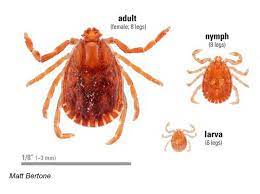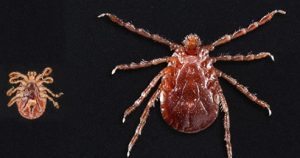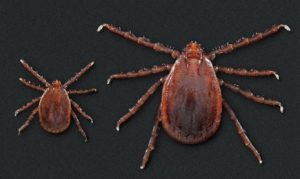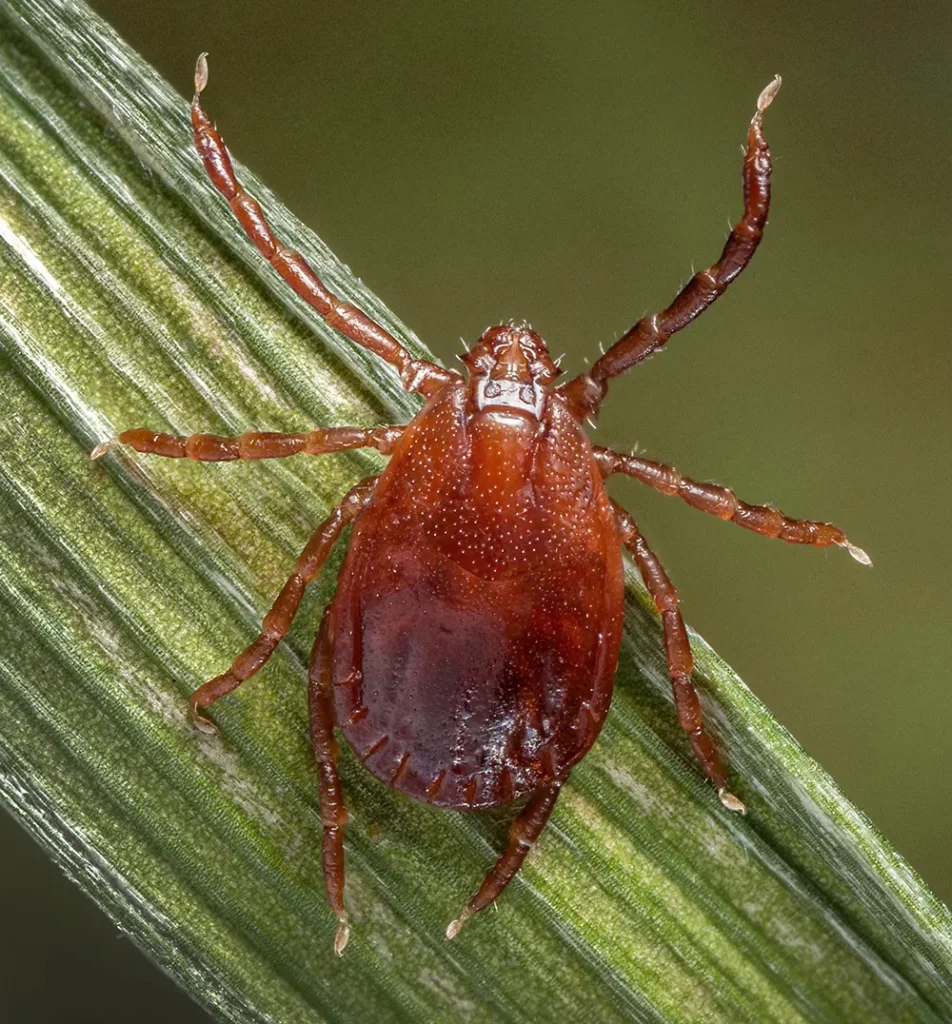The Long Horned Tick, also known as the East Asian or bush tick, is a small, brown tick with long mouthparts and distinctive horns on its head. It is a recent arrival in the United States, with its first documented appearance in New Jersey in 2017. Since then, it has been found in other states, including New York, Virginia, West Virginia, North Carolina, and Arkansas.

The Long Horned Tick is native to East Asia and has been known to infest livestock in that region for centuries. It feeds on the blood of mammals, including humans, and can transmit a variety of diseases, including spotted fever rickettsiosis and severe fever with thrombocytopenia syndrome (SFTS).
In New Jersey, the Long Horned Tick has primarily been found on domesticated animals, including horses, sheep, and cattle. However, it is concerning because it can reproduce without a mate, allowing it to rapidly establish populations in new areas. In addition, it is a potential threat to wildlife and humans, as it can transmit diseases to both.

The Long Horned Tick’s arrival in New Jersey has raised concerns among farmers, veterinarians, and public health officials. The tick is a hardy species that can survive in a variety of habitats and climates, and its ability to reproduce without a mate makes it difficult to control. In addition, it is not clear how the tick arrived in the United States, although it is suspected that it may have been introduced through the importation of livestock.
To address the threat posed by the Long Horned Tick, New Jersey has taken a number of steps. These include increased monitoring and surveillance of tick populations, public education campaigns to raise awareness of the tick and its potential risks, and research into new methods of tick control. In addition, the state has established a tick-borne disease research center at Rutgers University to study the biology of the tick and develop new methods of prevention and treatment.

Despite these efforts, the Long Horned Tick remains a concern in New Jersey and other states where it has been found. The best way to protect yourself and your animals from tick-borne diseases is to take steps to prevent tick bites. These include wearing long sleeves and pants when outdoors, using insect repellent, checking for ticks after spending time outside, and removing ticks promptly using tweezers or a tick removal tool.
In conclusion, the arrival of the Long Horned Tick in New Jersey and other parts of the United States is a reminder of the importance of vigilance in preventing tick-borne diseases. While much is still unknown about this tick, ongoing research and public education efforts offer hope that it can be controlled and its potential risks minimized.



